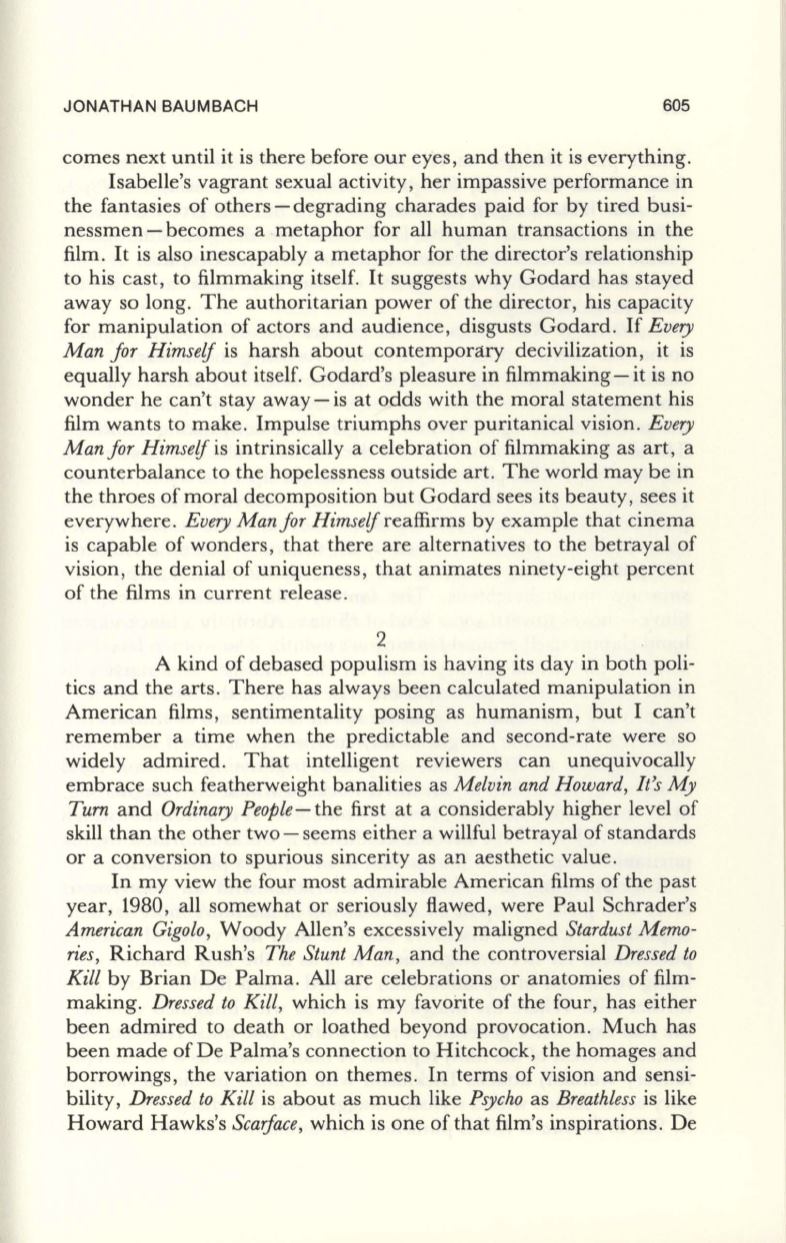
JONATHAN BAUMBACH
605
comes next until it is there before our eyes, and then it is everything.
Isabelle's vagrant sexual activity, her impassive performance in
the fantasies of others - degrading charades paid for by tired busi–
nessmen - becomes a metaphor for all human transactions in the
film. It is also inescapably a metaphor for the director's relationship
to his cast, to filmmaking itself. It suggests why Godard has stayed
away so long. The authoritarian power of the director, his capacity
for manipulation of actors and audience, disgusts Godard.
If
Every
Man for Himselj
is harsh about contemporary decivilization, it is
equally harsh about itself. Godard's pleasure in filmmaking- it is no
wonder he can't stay away - is at odds with the moral statement his
film wants to make. Impulse triumphs over puritanical vision.
Every
Man for Himselj
is intrinsically a celebration of filmmaking as art, a
counterbalance to the hopelessness outside art. The world may be in
the throes of moral decomposition but Godard sees its beauty, sees it
everywhere.
Every Man for Himseljreaffirms
by example that cinema
is capable of wonders, that there are alternatives to the betrayal of
vision, the denial of uniqueness, that animates ninety-eight percent
of the films in current release.
2
A kind of debased populism is having its day in both poli–
tics and the arts. There has always been calculated manipulation in
American films, sentimentality posing as humanism, but I can't
remember a time when the predictable and second-rate were so
widely admired. That intelligent reviewers can unequivocally
embrace such featherweight banalities as
Melvin and Howard, It's My
Tum
and
Ordinary People
-
the first at a considerably higher level of
skill than the other two - seems either a willful betrayal of standards
or a conversion to spurious sincerity as an aesthetic value.
In my view the four most admirable American films of the past
year, 1980, all somewhat or seriously flawed, were Paul Schrader's
American Gigolo,
Woody Allen's excessively maligned
Stardust Memo–
ries,
Richard Rush's
The Stunt Man,
and the controversial
Dressed to
Kill
by Brian De Palma. All are celebrations or anatomies of film–
making.
Dressed to Kill,
which is my favorite of the four, has either
been admired to death or loathed beyond provocation. Much has
been made of De Palma's connection to Hitchcock, the homages and
borrowings, the variation on themes. In terms of vision and sensi–
bility,
Dressed to Kill
is about as much like
Psycho
as
Breathless
is like
Howard Hawks's
Scarface,
which is one of that film's inspirations. De


